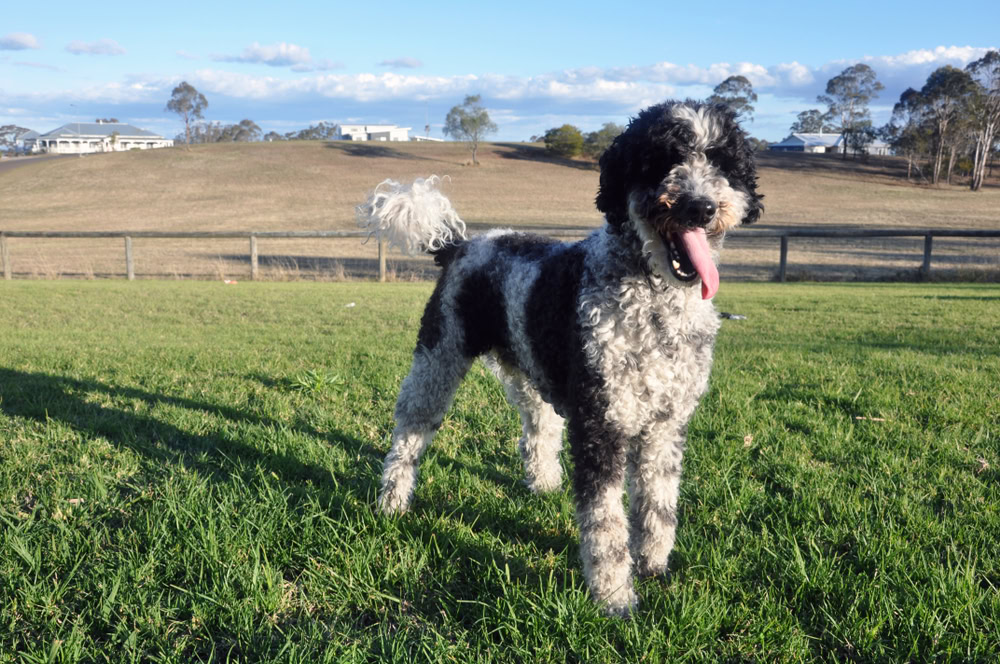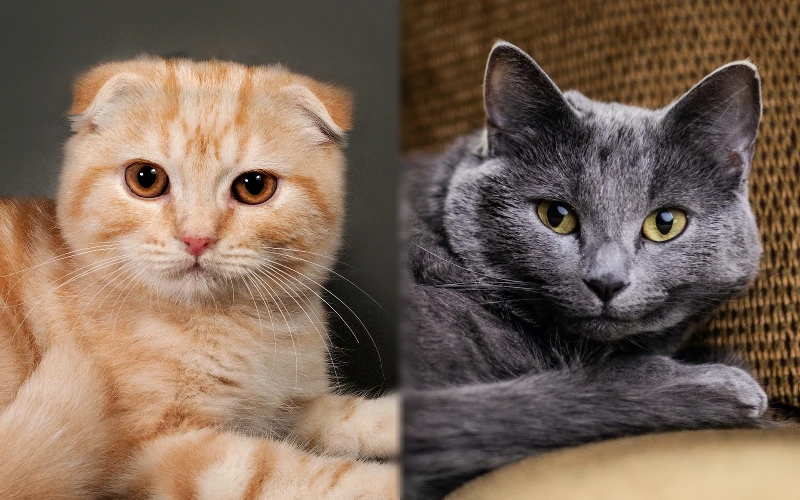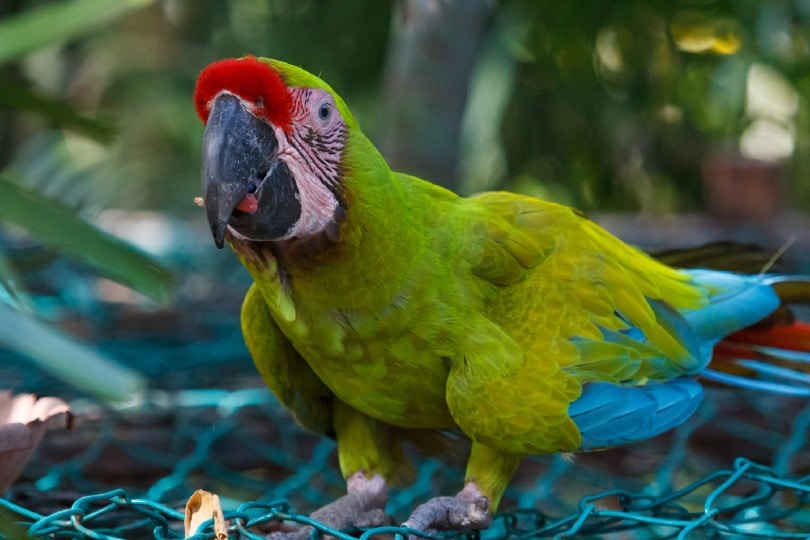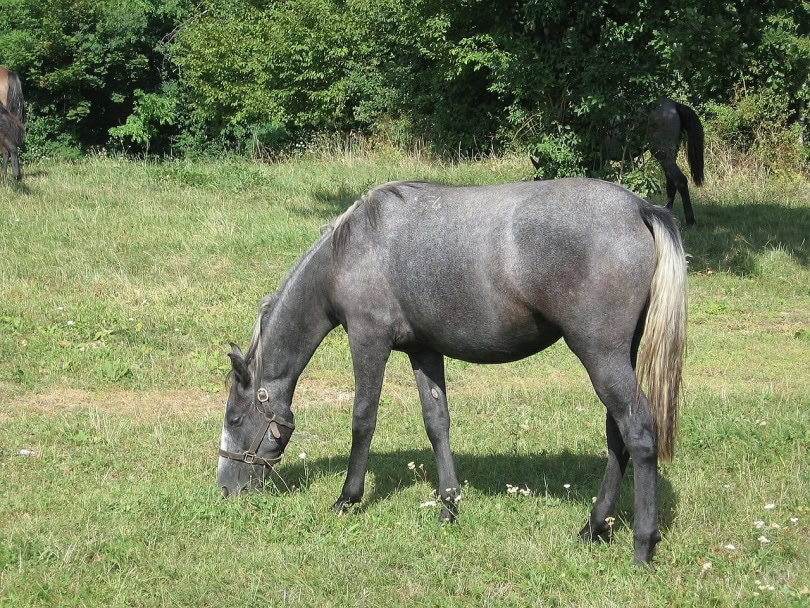Click Below to Skip Ahead
First, there were wolves. Over thousands of years, those wild and deadly canines changed and evolved as they lived by our sides, becoming more placid, playful, and trusting. As time went on, we started to meddle as well, encouraging the larger, the smaller, the curly, and the long to breed amongst themselves and become the dog we know and love today.
Having created myriad unique breeds, we started to hybridize, mixing breeds together to create -oodles, -doodles, -chons, and -poos, with some of these ‘designer dogs’ fetching more than the original breeds themselves! One such example of an ‘oodly’ dog breed is the Schnoodle. This mix of the Schnauzer and Poodle is not only an adorable dog, but its name is too.
Let’s take a closer look at the loving and allergy-friendly Schnoodle.
Breed Overview
Height:
12–15 inches
Weight:
11–18 pounds
Lifespan:
12–15 years
Colors:
Apricot, black, blue, brown, cream, gray, silver, white
Suitable for:
Families, those looking for a low-shedding dog, apartment living
Temperament:
Loyal & loving, intelligent, easy to train, friendly, can be yappy
Schnoodle has also other names such as Miniature Schnoodle, Schnauzerdoodle, Schnauzerpoo. There is also a less common Giant Schnoodle, which is a mix of the Giant Schnauzer and Standard Poodle.
Hybrid, cross, or designer breeds are not officially recognized by the American Kennel Club, but that hasn’t stopped their popularity. Although we can never guarantee which traits will or won’t be passed on, it is the hope and aim of the breeders of hybrid dogs to end up with litters of dogs that retain the best features of both parent breeds, whilst gradually weeding out the worst. However, if you’re considering the gorgeous Schnoodle, it’s a good idea to be familiar with the traits of both breeds involved; the good and the bad.
For dog lovers with allergies, the Schnoodle may be a dream come true. Although no dog is ever going to be completely allergy-friendly, both the Schnauzer and Poodle are low-shedding breeds, often referred to as being hypoallergenic. But don’t let that fool you; they are also well known for needing regular grooming to keep their coats knot-free and looking great.
The Schnoodle is likely to be energetic, playful, and affectionate, but you will need to get onto obedience training and bark management early on, as they can be more than a little talkative. But if you’re looking for a dog that will come with you on a run and snuggle with you on the sofa, the Schnoodle might be just what you need.
Schnoodle Characteristics

Schnoodle Puppies
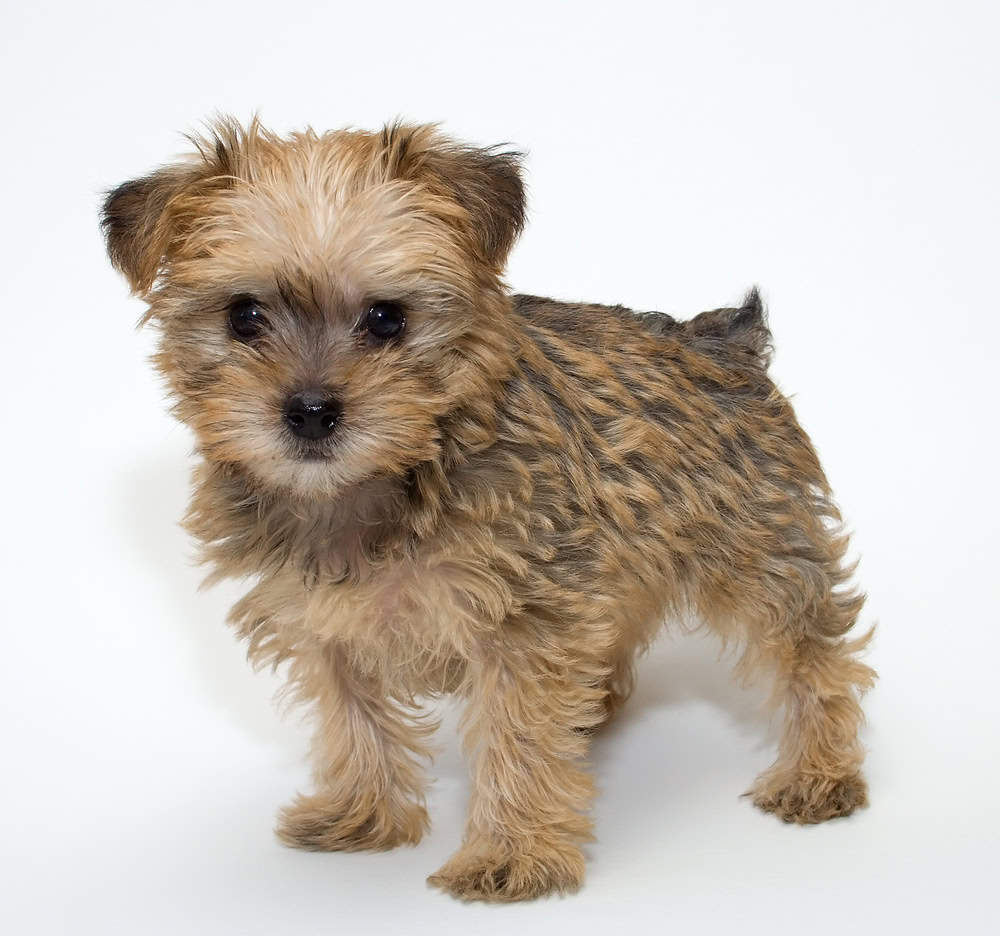
Both mini Schnauzer and mini Poodle puppies are adorable, fluffy little cuddle monsters, and that’s also what you’ll get with a Schnoodle. Be warned though; it can be tempting to spend too much time schnuggling your Schnoodle when you should be socializing and training them, so don’t let their gorgeousness distract you from the important things.
The Schnoodle is clever and trainable, but easily distracted, so make sure you set aside 2 or 3 short sessions for training each day, rather than attempt to teach them too much at once. They will respond well to treats and a fuss, so use positive reinforcement to get your pup toilet trained and coming to their name.
With the popularity of designer breeds always increasing, and neither Poodle nor Schnauzer being a particularly difficult breed to find, locating a breeder who can set you up with a Schnoodle of your own shouldn’t be too hard. Depending on where you look, some breeders will (rightly) classify the Schnoodle as a crossbreed, and price them accordingly, but others may charge a premium for a ‘prebred’ Schnoodle, which has been bred from multiple generations of Schnoodles.
But before you go in search of a breeder, be sure to check out animal shelters; you may not find a hybrid dog with pedigree papers, but you might find yourself something even better – the perfect pup that is in desperate need of a loving home.
Schnoodle Origin & History
A relative newcomer to the hybrid game, Schnoodles started appearing around the 1970s. You may find Schnoodles that are a direct cross between a Poodle and a Schnauzer, or those that are the product of breeding a Schnoodle with another Schnoodle. A first-generation Schnoodle is essentially a crossbreed, while 3rd or 4th generations are considered to be a more established form of the designer breed.

Temperament & Intelligence of the Schnoodle 🧠
One of the best and worst things about the Schnoodle is that they are both adorable and intelligent. Well-meaning owners may let their little ball of fluff get away with naughty behaviors when they are tiny which are not so cute when they’ve grown up, leading to conflict and frustration. Play-biting humans – especially children – should not be tolerated in your puppies, because they won’t understand why it’s not tolerated when they are adults.
These dogs are eager to please, but will easily manipulate the uninitiated. Be strict with yourself and lay down the ground rules; you may feel a little bit mean when you have to focus on training rather than playing, but your pup will thank you in the end. The Schnauzer will not respond well to shouting or punishment, and positive reinforcement will be your friend.
Are These Dogs Good for Families? 🏡
Being playful, cuddly, active, and low-shedding, the Schnoodle is an ideal family dog. They are well suited to smaller homes or apartments, provided they get plenty of outdoor exercise, but will be just as happy with lots of space to burn off energy.
As mentioned above, they will often like to engage in rough play, with nipping and biting often tolerated due to their small size, but it is important to stop this in its tracks as they can – and will – carry this behavior into adulthood.
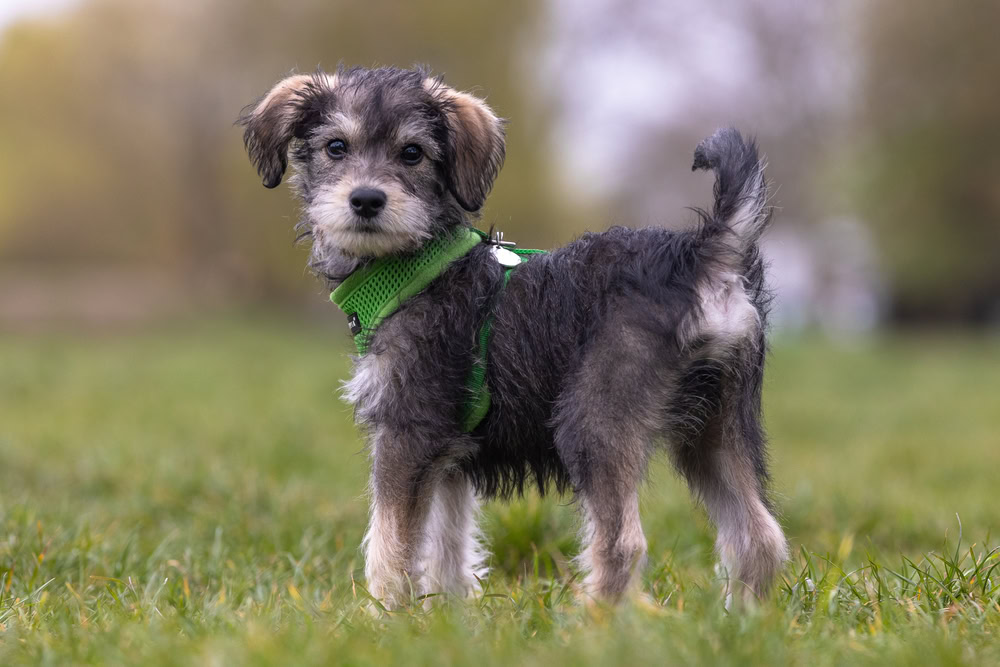
Does This Breed Get Along With Other Pets? 🐶 😽
While every dog, family, and household is different, in general, the Schnoodle will fit in well with most situations. They can be a bit feisty with cats, so introductions need to be slow and supervised, and they need to be kept away from small pets like hamsters and guinea pigs, as they often don’t understand that rough play isn’t okay.
When it comes to introducing them to other dogs, the best thing to do is allow adult dogs to set the tone and lay down ground rules and manners from the beginning. Most dogs will recognize a pup and treat them accordingly, with patience and noise rather than violence! Never leave them unsupervised with new dogs, as these little fluffballs aren’t the best judges of when ‘enough is enough’, so you may need to step in and give other dogs a break!

Things to Know When Owning a Schnoodle
Food & Diet Requirements 🦴
As with any dog, a high-quality, nutritionally balanced diet is what these dogs need. Puppies need to eat a diet formulated for their life stage until they are at least 8-10 months old, at which point they can be gradually moved onto adult food.
The Schnoodle can be predisposed to dental problems, so be sure to provide them with dental chews, and large size kibble to crunch, and introduce them to brushing when they are young. They can also easily become overweight, so make sure you match their food intake to their metabolism and energy output.
Exercise 🐕
The Schnoodle doesn’t need hours and miles of exercise, but they do have plenty of energy to burn off. 1-2 hours of running and play will keep them fit and healthy, but make sure you include some toys and puzzles to keep their minds active too.
The Schnoodle can become a bit of a couch potato, putting it at higher risk for obesity and diabetes, so make sure they have a regular exercise routine.
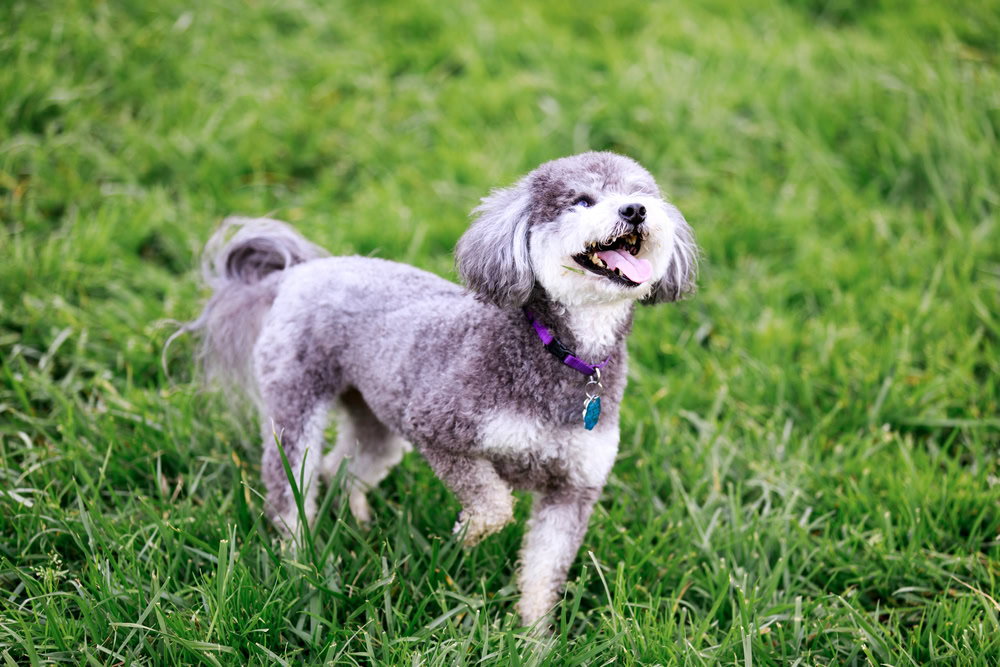
Training 🦮
As we mentioned above, the Schnoodle is intelligent and will respond well to clear instructions and positive reinforcement. They can also be willful little hooligans, so you’ll need to stay on top of your game to make sure they don’t run wild!
Grooming ✂️
The low-shedding coat of the Schnoodle will benefit from a session with a detangling comb and dry shampoo 2-3 times a week, to make sure their coat stays free from knots.
They will also need a visit to a groomer every 8-12 weeks or so for a professional clip.
Both the Schnauzer and Poodle have rather hairy ear canals, so get your puppy used to having their ears examined and cleaned from a young age. Making ear cleaning and tooth brushing a regular and enjoyable part of your Schnoodle’s routine will save you a lot of stress, as well as a lot of money.
Health and Conditions 🏥
When it comes to designer breeds like the Schnoodle, it is harder to predict what sort of health conditions they may inherit; they may have none of the predispositions of the parent breeds, or they may have them all. It’s always worth being prepared for the worst (although it would be very unlucky and unlikely). Some of these conditions can be tested for, or avoided by only breeding from disease-free individuals, so if you are going to a breeder, be sure to ask them what methods they are using to avoid inherited health problems. We always recommend doing this before seeing any puppies, so you aren’t distracted by the cuteness!
These are the health conditions seen most often in the Poodle and Schnauzer breeds:
- Patella luxation (mobile kneecaps)
- Obesity
- Cataracts
- Progressive Retinal Atrophy (PRA)
- Cushing’s Syndrome (Hyperadrenocorticism)
- Diabetes Mellitus
- Pancreatitis
- Liver shunt
- Addison’s Disease (Hypoadrenocorticism)
- Hypothyroidism
- Avascular Necrosis of the Femoral Head (Legg-Calve Perthė Disease)
Male vs Female
As a smaller breed, there aren’t any major differences between the male and female Schnoodle, though the male may be a little taller and stockier.
Castration of the male shouldn’t take place before they are 10-12 months old, but will also depend on individual temperament, behavior, and health.
The recommended timing of spaying non-breeding females varies, with some research suggesting that spaying before their first season, once they are over 6 months old, is ideal. Others recommend performing the surgery between their first and second seasons. This reduces the risks of developing hormone-responsive urethral sphincter mechanism incontinence, while keeping the risks of mammary cell tumors very low.


3 Little-Known Facts About the Schnoodle
1. George Clooney had a Schnoodle
In 2010, international human rights lawyer, Amal Clooney, and husband George, rescued an older Schnoodle named Einstein. He was in an animal shelter, and due to be put to sleep later that day. Einstein, who starred with actor George in an ad for Omega watches, passed away in 2017.
2. Schnoodles can come in any color
Because the Poodle comes in such a vast array of colors and patterns, the Schnoodle can be found in virtually every color imaginable: solid, patches, parti, or spotty.
3. Schnoodles can be very athletic
You might be picturing a sweet and demure little dog that sits on your lap, but these curly-coated canines excel in agility, and fly-ball, and love to run and play.
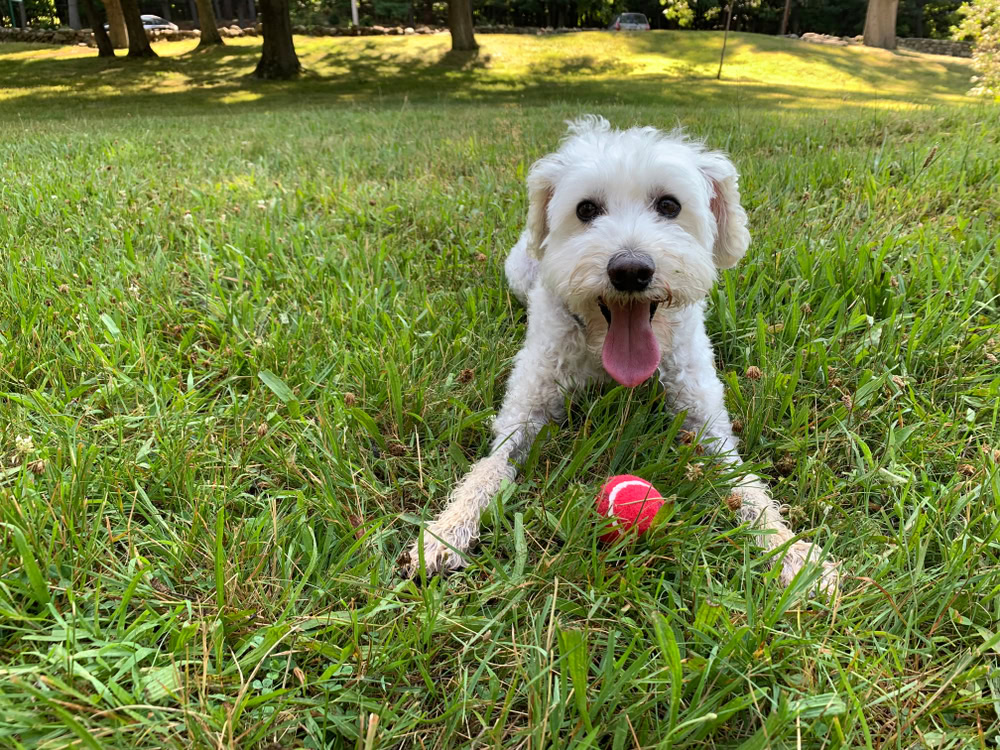

Final Thoughts
The Schnoodle is just about as sweet and adorable as their name suggests. An ideal choice for dog lovers looking for a low-shedding breed, and a family-friendly pet that will love long walks, fun games, and snuggling with pets and people alike. Both the Schnauzer and Poodle have some mild and moderate health conditions to consider, so always do your research before committing to a puppy. It’s important to set boundaries and start training from day one, as these gorgeous balls of fluff have a habit of taking advantage of sympathetic owners, which isn’t much fun when you’ve got a disobedient, adult ball of fluff!
Featured Image Credit: Nicole Klein, Shutterstock
